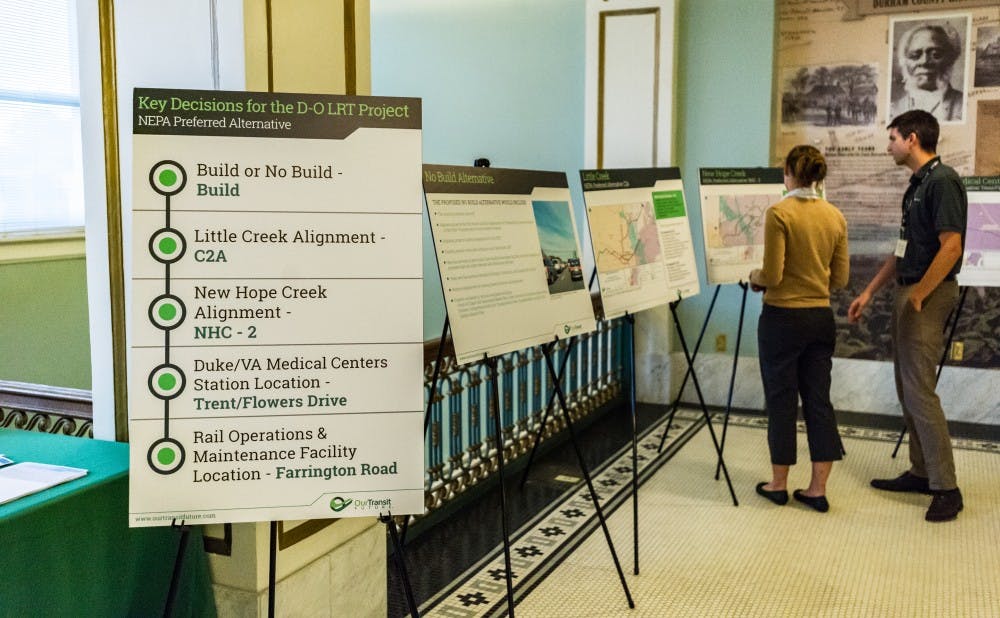Community members brought up concerns about accessibility, efficiency and affordability in a formal public hearing about the proposed Durham-Orange Light Rail Line transit project Thursday.
The proposed 17-mile light rail would have 17 stops connecting Durham and Chapel Hill, including stops near Duke and the University of North Carolina at Chapel Hill. It could begin operating as early as 2025 and has an estimated cost of $1.8 billion, adjusting for inflation. Thursday's meeting was held at the Durham County Commissioners Chamber and focused on allowing the public to express comments about the Draft Environmental Impact Statement that was prepared by GoTriangle in collaboration with the Federal Transit Administration.
"I am fully supportive of the light rail,” said Stephen Schewel, a visiting assistant professor in the Sanford School of Public Policy and member of the Durham City Council. "Talk about a decision that will influence tremendously whether a city is livable."
Schewel said bringing people to and from Duke is a major component of the project, noting that the route would include a stop on Erwin Road—in close proximity to West Campus. He added that as the second-largest private employer in the state, Duke will be a stakeholder in the planning process.
In its last meeting, the Durham City Council delayed voting on whether to support the light rail transit project until after the public comments at the Durham meeting Thursday and a meeting in Chapel Hill that occurred Tuesday. The public comment period for the project ends Oct. 13, and the feedback will be included in the final version of the Draft Environmental Impact Statement that will be submitted to the FTA in February 2016.
"It’s still preliminary planning at this point," Schewel said.
Michael White, a recent University of North Carolina at Chapel Hill graduate expressed concern at the meeting about the route of the project, noting that the proposed route does not service areas off Franklin Street.
“It doesn’t serve the people who shouldn’t be driving,” White said. He said that he thinks the light rail can work, but with modifications.
Voters in Durham and Orange Counties already approved a one-half cent sales tax to fund the local contribution for the light rail project. In addition to local funding sources, the project would rely on federal funding, which could be in question after the state's budget capped federal contributions to light-rail projects at $500,000. The state's House of Representatives voted to remove the cap for the Durham-Orange Light Rail project earlier this week, but the Senate and Governor Pat McCrory have yet to weigh in.
Several members in opposition to the project voiced concerns about the costs of construction and expressed doubt about the ridership estimates associated with the project so far.
Tom Clark, a Durham County resident who spoke at the meeting, noted that the project is too expensive in relation to the amount of ridership it will generate.
“We do have a transportation problem, but we’re doing it with the wrong solution,” he said.
Get The Chronicle straight to your inbox
Sign up for our weekly newsletter. Cancel at any time.

